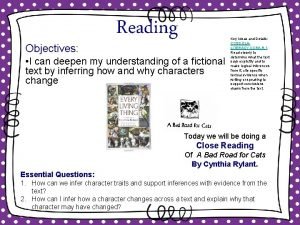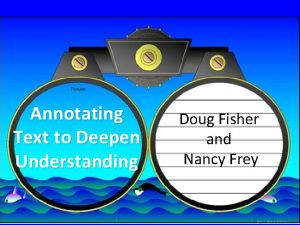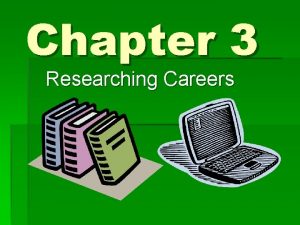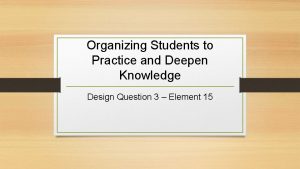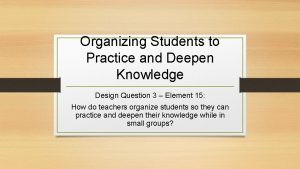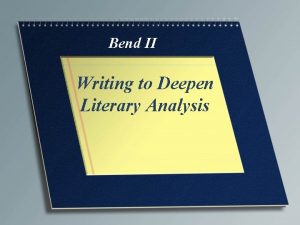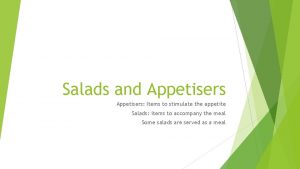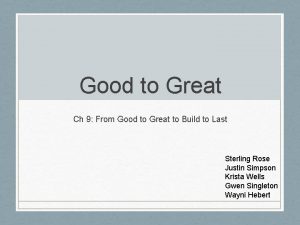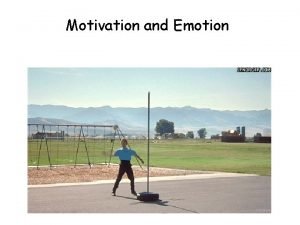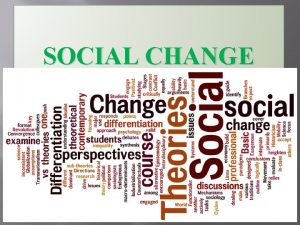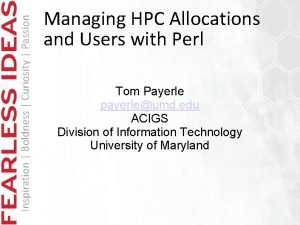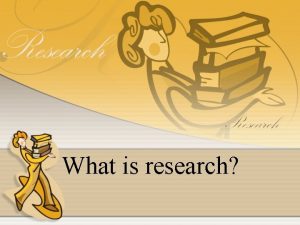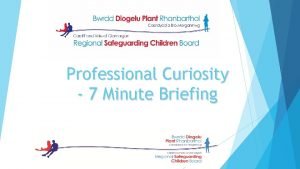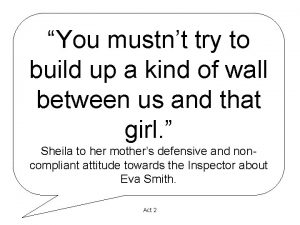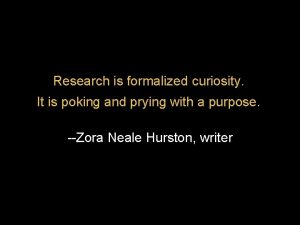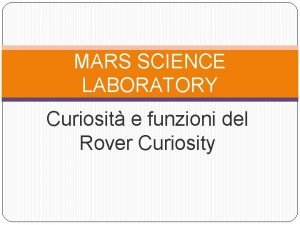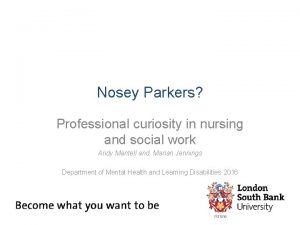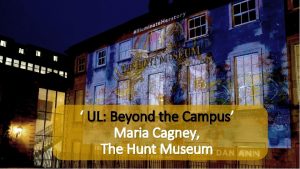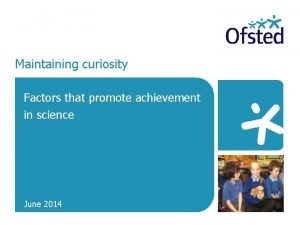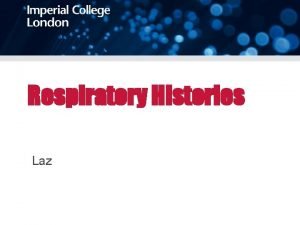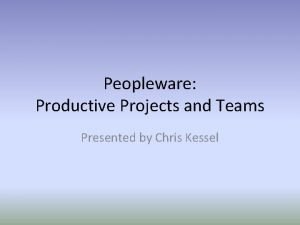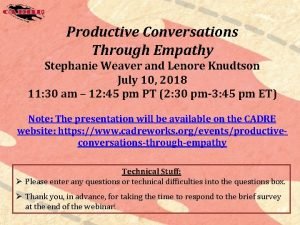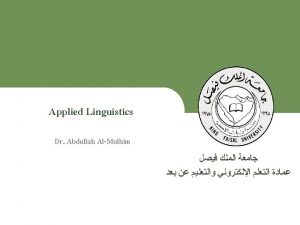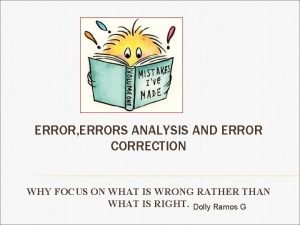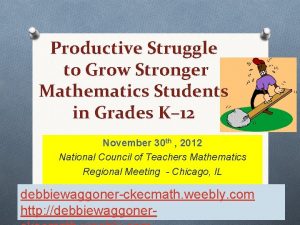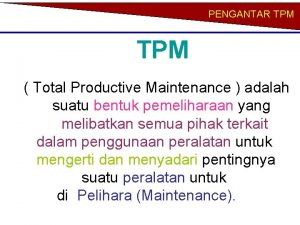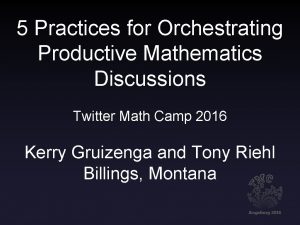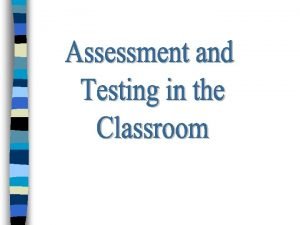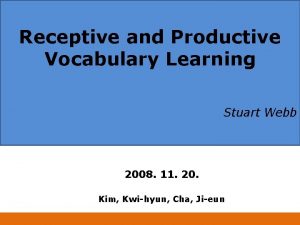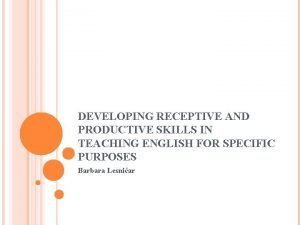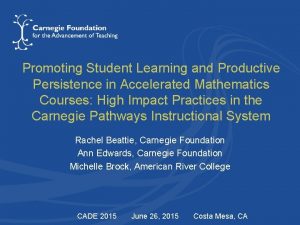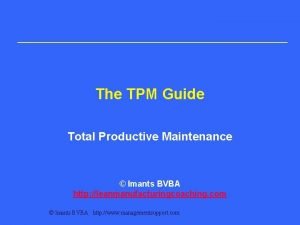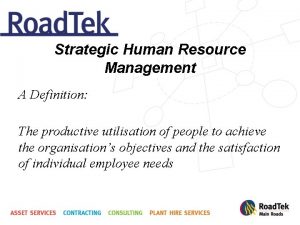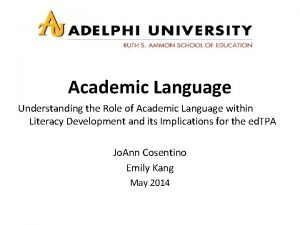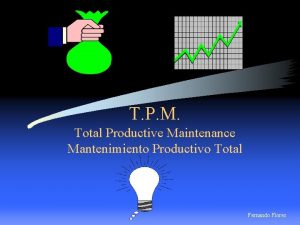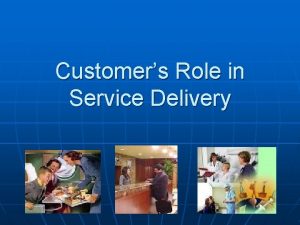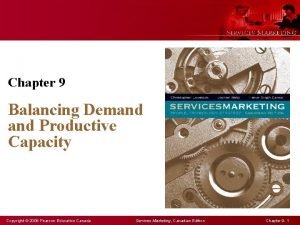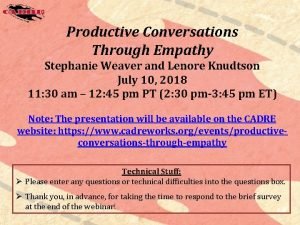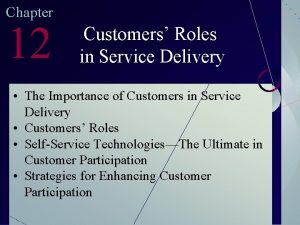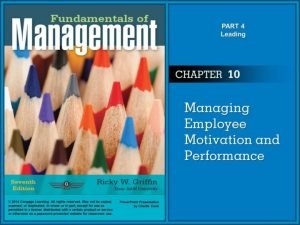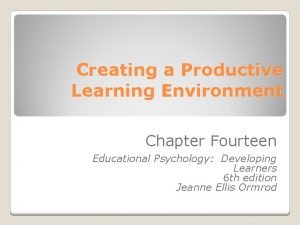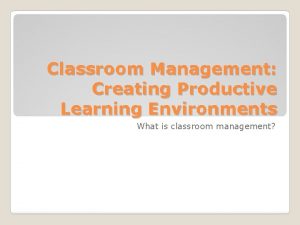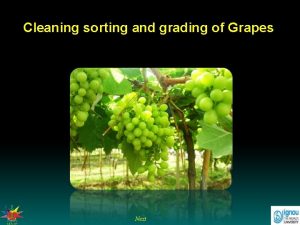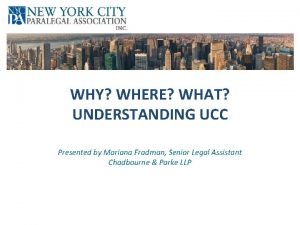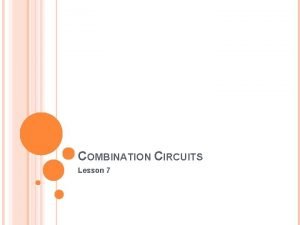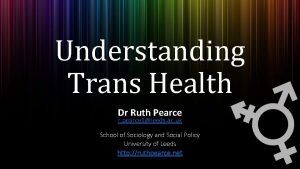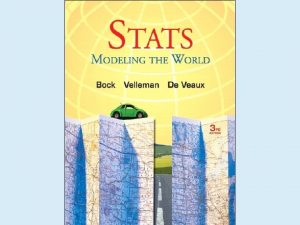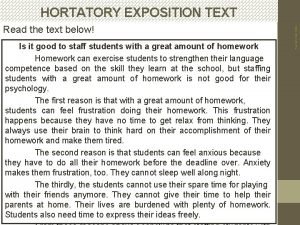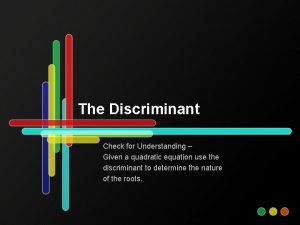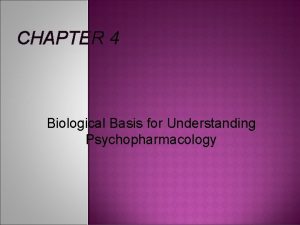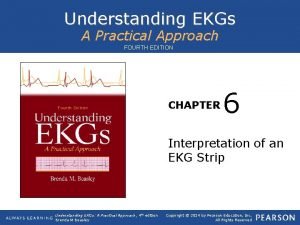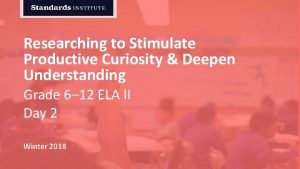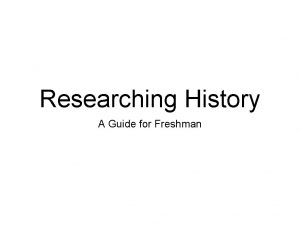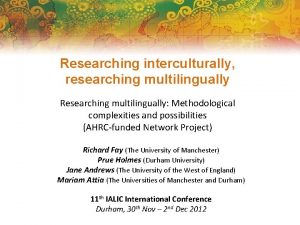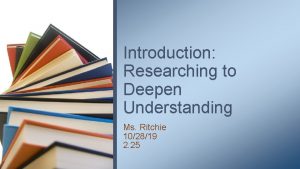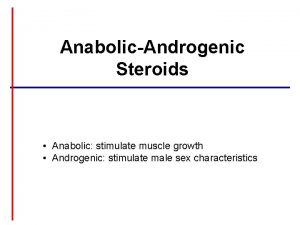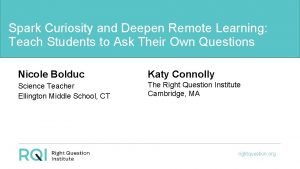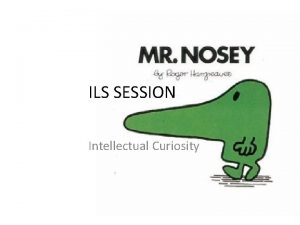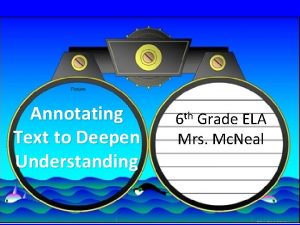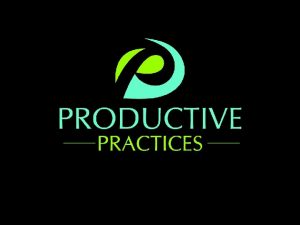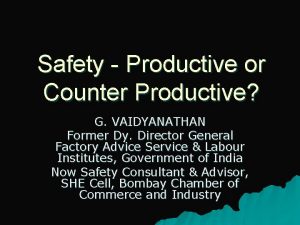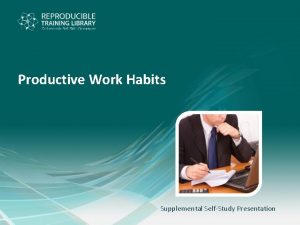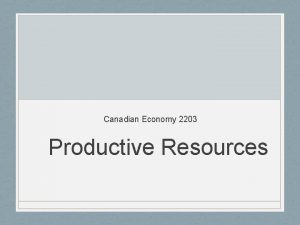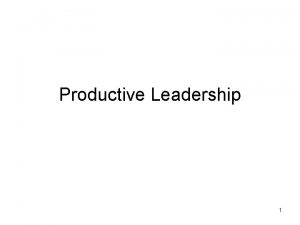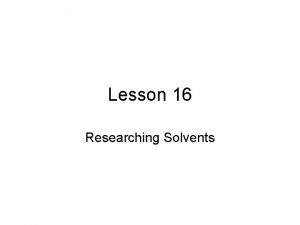Researching to Stimulate Productive Curiosity Deepen Understanding Grade

















![State Standards W. 6– 8. 7 [LAFS. 6– 8. W. 3. 7] G 6: State Standards W. 6– 8. 7 [LAFS. 6– 8. W. 3. 7] G 6:](https://slidetodoc.com/presentation_image/2779911778d568afc636bb79c4606bfb/image-18.jpg)
![State Standards W. 9– 12. 7 [LAFS. 9– 12. W. 3. 7] CCSS. ELA-LITERACY. State Standards W. 9– 12. 7 [LAFS. 9– 12. W. 3. 7] CCSS. ELA-LITERACY.](https://slidetodoc.com/presentation_image/2779911778d568afc636bb79c4606bfb/image-19.jpg)
![State Standards W. 6– 8. 8 [LAFS. 6– 8. W. 3. 8] G 6: State Standards W. 6– 8. 8 [LAFS. 6– 8. W. 3. 8] G 6:](https://slidetodoc.com/presentation_image/2779911778d568afc636bb79c4606bfb/image-20.jpg)
![State Standards W. 9– 12. 8 [LAFS. 9– 12. W. 3. 8] G 9– State Standards W. 9– 12. 8 [LAFS. 9– 12. W. 3. 8] G 9–](https://slidetodoc.com/presentation_image/2779911778d568afc636bb79c4606bfb/image-21.jpg)




























































- Slides: 81

Researching to Stimulate Productive Curiosity & Deepen Understanding Grade 6– 12 ELA II Summer 2017

Researching to Stimulate Productive Curiosity & Deepen Understanding Your Facilitators Judson Odell Norka Padilla 2

Researching to Stimulate Productive Curiosity & Deepen Understanding Introductions Raise your hand if… • You are an ELA teacher • You are an ESL Teacher • You work for a nonprofit • You support schools • You coach and develop others • You have a Special Education Certification • You have a different role than listed 3

Norms That Support Our Learning • Take responsibility for yourself as a learner. • Honor timeframes (start, end, activity). • Be an active and hands-on learner. • Use technology to enhance learning. • Strive for equity of voice. • Contribute to a learning environment where it is “safe to not know. ” • Contribute to our “Equity Ladder” 4

Researching to Stimulate Productive Curiosity & Deepen Understanding The Week at a Glance Day Monday 8: 30– 5: 00 Tuesday 8: 30– 4: 30 Wednesday 8: 30– 4: 30 Thursday 8: 3– 4: 30 Friday 8: 30– 2: 30 Ideas Research to Deepen Understanding Writing Instruction in an Era of Higher Standards Developing Expert Packs English Language Learners, Linguistically Marginalized Students and Complex Text in the Classroom Bringing it All Together 5

Researching to Stimulate Productive Curiosity & Deepen Understanding We Take Data Seriously • 3 -minute online Daily Survey. Facilitators will address feedback the following day. • Thursday – 10 -minute online Knowledge Survey Post-Test. Answer key will be available. 6

Researching to Deepen Understanding ODELL EDUCATION

Welcome! Discuss with the person next to you, and be prepared to share what your partner said: 1. What is the first research project you remember doing? 2. What was the topic? 3. How did you get your information?

What are the research skills our students need to develop?

Workshop Objectives By the end of this workshop, participants will be able to. . . 1. Define Inquiry-based Research and its implications for literacy instruction 2. Identify the standards (CCSS or LAFS) associated with research 3. Explain how to use OE Core Proficiencies materials to conduct standardsaligned instruction and research 10

Workshop Roadmap Session 1 TEACHING RESEARCH IN OUR NEW CONTEXT: PRODUCTIVE CURIOSITY Session 2 INITIATING INQUIRY AND GATHERING INFORMATION LUNCH Session 3 DEVELOPING AN EVIDENCE-BASED PERSPECTIVE Session 4 COMMUNICATING AN EVIDENCE-BASED PERSPECTIVE

Workshop Sessions Protocol: Activity Progression 1. Activity a. Explanation of activity b. Participants work independently or in pairs (as students) c. Small groups discuss the activity (as teachers) d. Plenary discussion (as teachers) 2. Small Group and Plenary Discussion Guides a. How do the activities address the specific language of the targeted standards? b. What do the activities teach us about our Inquiry Questions?

Session 1: Teaching Research in Our Contemporary Context: Developing Productive Curiosity

Session 1: Objectives At the end of this session, participants will be able to. . . 1. Identify the workshop’s central inquiry questions about teaching research 2. Explain the CCSS/LAFS’s implications for teaching research 3. Explain the OE Core Literacy Proficiencies approach to developing student research abilities

Research Workshop: Inquiry Questions 1. What are the research skills that our students need to develop today? 2. How do we design instruction so that all learners can successfully conduct independent inquiry-based research? 3. How do we ensure that research is rigorous and studentdriven?

State Standards & LAFS Standards For this training, we will be reading and discussing the state standards but will reference the equivalent Language Arts Florida Standards (LAFS). The LAFS mentioned in this training are the same as the highlighted state standards.

Activity 1. 1: Reading State Standards W. 7 and W. 8 closely Read and Annotate: W. 7 and W. 8 [LAFS. W. 3. 7 and LAFS. W. 3. 8] Discuss in your small group using guiding questions: 1. What words or phrases stand out as significant? 2. What connections do you see between the two standards? 3. What seems different from how you have approached teaching students to analyze and write arguments in the past? Plenary discussion
![State Standards W 6 8 7 LAFS 6 8 W 3 7 G 6 State Standards W. 6– 8. 7 [LAFS. 6– 8. W. 3. 7] G 6:](https://slidetodoc.com/presentation_image/2779911778d568afc636bb79c4606bfb/image-18.jpg)
State Standards W. 6– 8. 7 [LAFS. 6– 8. W. 3. 7] G 6: Conduct short research projects to answer a question, drawing on several sources and refocusing the inquiry when appropriate. G 7: Conduct short research projects to answer a question, drawing on several sources and generating additional related, focused questions for further research and investigation. G 8: Conduct short research projects to answer a question (including a selfgenerated question), drawing on several sources and generating additional related, focused questions that allow for multiple avenues of exploration.
![State Standards W 9 12 7 LAFS 9 12 W 3 7 CCSS ELALITERACY State Standards W. 9– 12. 7 [LAFS. 9– 12. W. 3. 7] CCSS. ELA-LITERACY.](https://slidetodoc.com/presentation_image/2779911778d568afc636bb79c4606bfb/image-19.jpg)
State Standards W. 9– 12. 7 [LAFS. 9– 12. W. 3. 7] CCSS. ELA-LITERACY. W. 9 -10. 7 Conduct short as well as more sustained research projects to answer a question (including a self-generated question) or solve a problem; narrow or broaden the inquiry when appropriate; synthesize multiple sources on the subject, demonstrating understanding of the subject under investigation. CCSS. ELA-LITERACY. W. 11 -12. 7 Conduct short as well as more sustained research projects to answer a question (including a self-generated question) or solve a problem; narrow or broaden the inquiry when appropriate; synthesize multiple sources on the subject, demonstrating understanding of the subject under investigation.
![State Standards W 6 8 8 LAFS 6 8 W 3 8 G 6 State Standards W. 6– 8. 8 [LAFS. 6– 8. W. 3. 8] G 6:](https://slidetodoc.com/presentation_image/2779911778d568afc636bb79c4606bfb/image-20.jpg)
State Standards W. 6– 8. 8 [LAFS. 6– 8. W. 3. 8] G 6: Gather relevant information from multiple print and digital sources; assess the credibility of each source; and quote or paraphrase the data and conclusions of others while avoiding plagiarism and providing basic bibliographic information for sources. G 7– 8: Gather relevant information from multiple print and digital sources, using search terms effectively; assess the credibility and accuracy of each source; and quote or paraphrase the data and conclusions of others while avoiding plagiarism and following a standard format for citation.
![State Standards W 9 12 8 LAFS 9 12 W 3 8 G 9 State Standards W. 9– 12. 8 [LAFS. 9– 12. W. 3. 8] G 9–](https://slidetodoc.com/presentation_image/2779911778d568afc636bb79c4606bfb/image-21.jpg)
State Standards W. 9– 12. 8 [LAFS. 9– 12. W. 3. 8] G 9– 10: Gather relevant information from multiple authoritative print and digital sources, using advanced searches effectively; assess the usefulness of each source in answering the research question; integrate information into the text selectively to maintain the flow of ideas, avoiding plagiarism and following a standard format for citation. G 11– 12: Gather relevant information from multiple authoritative print and digital sources, using advanced searches effectively; assess the strengths and limitations of each source in terms of the task, purpose, and audience; integrate information into the text selectively to maintain the flow of ideas, avoiding plagiarism and overreliance on any one source and following a standard format for citation.

Activity 1. 2: Research Narrative Read and Annotate: the “Marisol narrative” Discuss in your small group using guiding questions: 1. What stands out to you as significant? 2. What aspects of the narrative are aligned to the state standards? 3. Now that you’ve read this, what do you still want to know? Plenary discussion

Activity 1. 3: Productive Curiosity “Defend your Thesis” research paper vs. the “Discover what interests you” research process Inquiry process drives productive curiosity: Deepening understanding The research process is a proficiency unto itself Establishing set research terminology Organized portfolio to support understanding and writing Variety of research-based products

Research: Stages of Inquiry I. INITIATING INQUIRY I determine what I want to know about a topic and develop inquiry questions that I will investigate. II. GATHERING INFORMATION I find and take notes on sources that will help me answer my inquiry questions and define the scope of my investigation. III. DEEPENING UNDERSTANDING I analyze key sources to deepen my understanding and answer my inquiry questions. IV. FINALIZING INQUIRY I synthesize my information to determine what I have learned and what more I need to know about my area of investigation. I gather and analyze more information to complete my inquiry. V. DEVELOPING AND COMMUNICATING AN EVIDENCE-BASED PERSPECTIVE I review and synthesize my research to develop and communicate an evidence-based perspective on my area of investigation.

A Note on State Standard/LAFS Requirements for Grade 6 1. Texts as sources 2. Full class inquiry based in common sources 3. Independent assessment and analysis of sources

Odell Education Materials Google search: “Odell education literacy” Click on: “Unit 3: Researching to Deepen Understanding” Click on: “Research Unit Grades 11 -12” http: //odelleducation. com/literacy-curriculum

Any questions about Session 1?

Session 2: Initiating Inquiry and Gathering Information

Session 2 Objectives At the end of this session, participants will be able to… 1. Identify ways research instruction can flow from classroom topics 2. Explain the first stage of research instruction: from Initiating Inquiry to Gathering Information 3. Identify instructional strategies to support students as they initiate their inquiry 4. Use tools to conduct searches to find initial sources 5. Assess sources for their credibility and utility

Research: Stages of Inquiry I. INITIATING INQUIRY I determine what I want to know about a topic and develop inquiry questions that I will investigate. II. GATHERING INFORMATION I find and take notes on sources that will help me answer my inquiry questions and define the scope of my investigation. III. DEEPENING UNDERSTANDING I analyze key sources to deepen my understanding and answer my inquiry questions. IV. FINALIZING INQUIRY I synthesize my information to determine what I have learned and what more I need to know about my area of investigation. I gather and analyze more information to complete my inquiry. V. DEVELOPING AND COMMUNICATING AN EVIDENCE-BASED PERSPECTIVE I review and synthesize my research to develop and communicate an evidence-based perspective on my area of investigation.

Activity 2. 1: Choosing Topics for Research Instruction Plenary Discussion Instruction on research proficiency can flow from a variety of contexts: • Full-length fiction and nonfiction students are studying • Topics associated with content from other classes • Topics arising from classroom discussion OE Core Literacy Proficiencies approach and materials support multiple ways of implementation

Activity 2. 2: Initiating Inquiry Watch: G 11 Research Topic Repository, Text #1 – “Design Council: What is Design? ” Discuss in your small group using guiding questions: 1. What stands out to me as I first view this video? 2. What do I learn about the topic? 3. What more do I want to learn about the topic? 4. How can I use this video to begin an inquiry on Design? Plenary discussion

Activity 2. 2: “Design Council: What Is Design? ”

Activity 2. 2 b: Initiating Inquiry Read: G 11 Research Topic Repository, pg. 3, “Introductory Topic Description” or Text #2, “Debating Sustainability, ” by Alice Rawsthorn Discuss in your small group using guiding questions: 1. What stands out to me as I read this text? 2. What do I learn about the topic? 3. What more do I want to learn about the topic? Plenary discussion

Activity 2. 3: Exploring a Topic Using a Tool A tool to help students initiate inquiry Gives students space to think about and write down areas of interest that will guide their first research steps

Activity 2. 3: Exploring a Topic Complete: Exploring a Topic Tool (At least 2 -3 Areas of Investigation) Discuss your Exploring a Topic Tool in small groups: 1. What more do I learn about the topic? 2. What aspects (areas) of the topic are highlighted in what I have read so far? 3. Why do I want to investigate that area of the topic? Plenary discussion

Posing Inquiry Questions 1. Central to the research portfolio and process 2. Handout to help guide questioning throughout the unit 3. Movement from general to more specific questions

Activity 2. 4: Posing Inquiry Questions In small groups: 1. Read closely: Posing Inquiry Questions Handout 2. Brainstorm inquiry questions for 2 -3 members’ Areas of Investigation 3. Use the Handout to support your brainstorm. 4. Generate 10 questions for each participant.

Activity 2. 5: Reflection on Initiating Inquiry Discuss with your table groups the experience of Initiating Inquiry using the following guiding questions: 1. What stands out to me as significant in this process? 2. What stands out as different to me in this process from how we have approached research instruction? How have the activities helped you develop your thinking around the workshop’s inquiry questions? : 1. What are the research skills that our students need to develop today? 2. How do we design instruction so that all learners can successfully conduct independent inquiry-based research? Plenary discussion

Moving from Inquiry Questions to Potential Sources Now that we have a list of questions, we can use them to help search for potential sources. Students conduct an initial pre-search to: • validate availability of information • confirm their interest • possibly refine the question or scope of the area

Potential Sources Tool

Activity 2. 6: Finding Sources and Recording Information Read: page 21– 23 of the Unit 3: Researching to Deepen Understanding: “ACTIVITY 1: PLANNING FOR SEARCHES” Online: Research Unit Plan Review: the Potential Sources Tool Discuss in your small group using Guiding Questions: 1. What stands out to me as I read this text? 2. What do I learn about the research process? Plenary discussion

Activity 2. 7: Finding Sources and Recording Information Individually, use the Inquiry Questions from your brainstorm to help you search for sources using your computer or smartphone. (If your Area of Investigation was not used in the brainstorming, develop a few similar questions for your own area). Complete the Potential Sources Tool using information from your sources. Record the following information in the tool: • Title/location • Author/text type/publication date • General content/ideas Do NOT complete last row of each source.

Finding and Assessing Sources in the State Standards W. 8 GRADE 6: Gather relevant information from multiple print and digital sources; assess the credibility of each source; quote or paraphrase the data and conclusions of others while avoiding plagiarism and providing basic bibliographic information for sources.

Finding and Assessing Sources in the State Standards W. 8 GRADES 9– 10: Gather relevant information from multiple authoritative print and digital sources, using advanced searches effectively; assess the usefulness of each source in answering the research question; integrate information into the text selectively to maintain the flow of ideas, avoiding plagiarism and following a standard format for citation.

Model: Assessing Sources POTENTIAL SOURCES TOOL:

Activity 2. 8: Assessing Sources Handout Read: Assessing Sources Handout Discuss in your small group using guiding questions: 1. What stands out to me as significant? 2. What aspects of the handout are aligned to the state standards? Plenary discussion

Activity 2. 9: Assessing Sources Use the Assessing Sources Handout and your Potential Sources Tool to evaluate two of your potential sources. Discuss in your small group using guiding questions: 1. How did you assess your sources? 2. What aspects of the activity are aligned to the state standards? 3. How might you use these materials and approaches in your own instruction? Plenary discussion

Session 3: Developing an Evidence-Based Perspective

Session 3 Objectives At the end of this session, participants will be able to… 1. Identify the components of the Research Portfolio 2. Explain methods for focusing research inquiry using graphic organizers 3. Explain instructional strategies for supporting students as they deepen their understanding of the topic 4. Explain how to use tools to organize and frame research and arrive at an evidence-based perspective

Research: Stages of Inquiry I. INITIATING INQUIRY I determine what I want to know about a topic and develop inquiry questions that I will investigate. II. GATHERING INFORMATION I find and take notes on sources that will help me answer my inquiry questions and define the scope of my investigation. III. DEEPENING UNDERSTANDING I analyze key sources to deepen my understanding and answer my inquiry questions. IV. FINALIZING INQUIRY I synthesize my information to determine what I have learned and what more I need to know about my area of investigation. I gather and analyze more information to complete my inquiry. V. DEVELOPING AND COMMUNICATING AN EVIDENCE-BASED PERSPECTIVE I review and synthesize my research to develop and communicate an evidence-based perspective on my area of investigation.

Developing Research Portfolio At this point, we have: 1. Reviewed the state standards related to conducting research 2. Written down and discussed several Areas of Investigation around the topic of Design using the Exploring a Topic Tool 3. Used an initial common source and Posing Inquiry Questions Handout to generate Inquiry Questions 4. Searched for potential sources using the Potential Sources Tool 5. Assessed our sources using information from the Assessing Sources Handout

Focusing Inquiry – State Standards W. 7: GRADE 6: Conduct short research projects to answer a question, drawing on several sources and refocusing the inquiry when appropriate. W. 7: GRADES 9– 10: Conduct short as well as more sustained research projects to answer a question (including a self-generated question) or solve a problem; narrow or broaden the inquiry when appropriate; synthesize multiple sources on the subject, demonstrating understanding of the subject under investigation.

Activity 3. 1: Taking Notes Use the Taking Notes Tool to take notes from your two to three potential sources, making connections between the sources. Make sure to write in the Inquiry Question you used to search for your sources. Discuss in your small group using guiding questions: 1. How does taking notes help you move from gathering sources to refocusing or narrowing your research? 2. What themes or groups of ideas/details do you notice among your sources? Plenary discussion

Activity 3. 2: Identifying Emerging Themes READ: Research Frame Tool Inquiry Path: a realm of inquiry stemming from one or more related Inquiry Questions. A path can be framed by a general question that summarizes more specific questions or subtopics. How has your interest changed—broadened/narrowed after initial searching, reading, and taking notes of sources? The Research Frame Tool helps capture the refining of their inquiry so the search for sources can begin in earnest.

Research Frame Tool Use the tool to: • Identify separate Inquiry Paths for each Area of Investigation • group questions thematically under each path


Activity 3. 3: Focusing Inquiry Review: State Standard W. 7 Use the tool: In pairs, group your Inquiry Questions thematically, using both the questions and new considerations you have picked up after having conducted a search for sources. a. take into account any new vocabulary and questions that came up in your search for potential sources. Use these groupings to generate Inquiry Paths on the Research Frame Tool Plenary Discussion

Forming Evidence-Based Perspectives and Claims W. 7: GRADE 6: Conduct short research projects to answer a question, drawing on several sources and refocusing the inquiry when appropriate. W. 7: GRADES 9– 10: Conduct short as well as more sustained research projects to answer a question (including a self-generated question) or solve a problem; narrow or broaden the inquiry when appropriate; synthesize multiple sources on the subject, demonstrating understanding of the subject under investigation.

On the Road to an Evidence-Based Perspective Notes on sources + Model Forming EBC + Organizing EBC (for Inquiry Path) + synthesis paragraph (expository still) = EVIDENCE BASED PERSPECTIVE

Forming EBC Tool Use the tool to: • Synthesize information gathered about an Inquiry Question • Answer an Inquiry Question


Synthesizing Claims about Inquiry Paths • Use the Organizing EBC Tool to: • Synthesize information across Inquiry Questions in an Inquiry Path • Make a claim about one Inquiry Path


Activity 3. 4: Making Evidence-Based Claims about Inquiry Questions Use the Forming EBC Tool to write claims about your Inquiry Questions in one Inquiry Path. Discuss in your small group using guiding questions: 1. What stands out to me as significant? 2. What aspects of the activity are aligned to the state standards? Plenary discussion

Activity 3. 5: Making Evidence-Based Claims about Inquiry Paths Use the Organizing EBC Tool to write claims that synthesize information from your Inquiry Questions in an Inquiry Path. Discuss in your small group using guiding questions: 1. What stands out to me as significant? 2. What aspects of the activity are aligned to the state standards? Plenary discussion

Activity 3. 6: Writing an Evidence-Based Perspective Using your Organizing EBC Tool(s), write a paragraph to communicate the evidence-based perspective you have arrived at based off your research. Discuss in your small group using guiding questions: 1. What stands out to me as significant? 2. What aspects of the activity are aligned to the state standards? Plenary discussion

Break

Session 4: Evaluating Research

Session 4 Objectives At the end of this session, participants will be able to… 1. Summarize evaluation strategies for research 2. Discuss their own research findings and process 3. Explain the research process with respect to the state standards/LAFS and the workshop Inquiry Questions 4. Explain how they can incorporate this research process into their own teaching practices

Activity 4. 1: Evaluating Students’ Research Read: Research Evaluation Criteria Checklist Discuss in your small group using guiding questions: 1. What stands out to me as significant? 2. Which parts did you complete today? 3. What is significant, new? 4. How is the process state-standards aligned? Plenary discussion

Research Evaluation Checklist

Activity 4. 2: Sharing Perspectives With a partner tell the story of your research experience, including: 1. Initial thoughts on the topic 2. Inquiry Questions 3. Results from source search 4. Refined understanding of the topic 5. Writing claims about Inquiry Questions and Paths Use guiding questions to drive a discussion: 1. How is the research process aligned to the state standards/LAFS? 2. In what ways can you implement the research process or components into your teaching practices? 3. How has your understanding of the workshop Inquiry Questions evolved? Plenary discussion

Activity 4. 3: Communicating an Evidence-Based Perspective Read: Pp. 42– 44 of OE Unit 3 Discuss in your small group using guiding questions: 1. What is the scope of this research unit and process? 2. Up until this point, what have students accomplished? 3. How can students use the work in their research portfolios to fully communicate their perspective? 4. Which final product makes the most sense given the instructional demands of your classroom/school/district?

Research Workshop: Inquiry Questions 1. What are the research skills that our students need to develop today? 2. How do we design instruction so that all learners can successfully conduct independent inquiry-based research? 3. How do we ensure that research is rigorous and student-driven?

Activity 4. 4: Applying Research in Your Community Discuss in your small group using guiding questions: 1. Which final product makes the most sense given the instructional demands of your classroom/school/district? 2. In what ways can you implement the research process or components into your teaching practices? 3. How has your understanding of the workshop Inquiry Questions evolved?

Thank You for Your Hard Work!


Capturing Equity—Debrief Day 1 What were the equitable practices for students that were woven throughout today’s engagement with research? 79

THIS is why. . "Research can shed light on issues we didn’t even know existed, and can raise questions we hadn’t realised even needed asking. " Freedman, T (2011). “Students’ innovative thinking sets sail when the natural inquisitiveness they bring to the learning table is inspired, affirmed, and cultivated. When given the opportunity to openly ask and explore, students learn and thrive. ” Kondt, J. S. (2009). “If a teacher is able to arouse students' curiosity about something they're naturally motivated to learn, they'll be better prepared to learn things that they would normally consider boring or difficult, as curiosity prepares the brain for learning and makes subsequent learning more rewarding. ” Stenger (2014). “Maybe the question we need to be asking is, are we allocating enough instructional time to address moderate and high complexity instruction? ” –Dr. Norman Webb 80

References • • • Slide 35: http: //odelleducation. com/wp-content/uploads/2013/09/Exploring-a-Topic. pdf Slide 37: http: //odelleducation. com/wp-content/uploads/2013/09/Posing-Inquiry-Questions. pdf Slide 41: http: //odelleducation. com/wp-content/uploads/2013/09/Potential-Sources. pdf Slide 42: http: //odelleducation. com/wp-content/uploads/2013/08/Research-Unit-Plan-G 11 -12. pdf Slide 47: http: //odelleducation. com/wp-content/uploads/2013/09/Assessing-Sources-Handout. pdf Slide 54: http: //odelleducation. com/wp-content/uploads/2013/09/Taking-Notes. pdf Slide 56: http: //odelleducation. com/wp-content/uploads/2013/09/Research-Frame. pdf Slide 61: http: //odelleducation. com/wp-content/uploads/2013/09/Forming-EBC. pdf Slide 63: http: //odelleducation. com/wp-content/uploads/2013/09/Organizing-EBC-2 pt. pdf Slide 72: http: //odelleducation. com/wp-content/uploads/2013/09/Research-Evaluation-Checklist. pdf Slide 74: http: //odelleducation. com/wp-content/uploads/2013/08/Research-Unit-Plan-G 11 -12. pdf 81
 Deepened my understanding
Deepened my understanding Annotation slows down the reader to deepen understanding
Annotation slows down the reader to deepen understanding Annotation slows down the reader to deepen understanding
Annotation slows down the reader to deepen understanding Chapter 3 researching careers
Chapter 3 researching careers Researching wan technologies
Researching wan technologies Researching
Researching Jana mittermaier
Jana mittermaier Organizing students to practice and deepen knowledge
Organizing students to practice and deepen knowledge Marzano element 15
Marzano element 15 Writer in bend
Writer in bend Salad that stimulate the appetite
Salad that stimulate the appetite Stimulate
Stimulate Bhag good to great
Bhag good to great Instinct theory vs drive reduction theory
Instinct theory vs drive reduction theory What are six factors that stimulate social change?
What are six factors that stimulate social change? Appetizer are foods which stimulate the
Appetizer are foods which stimulate the Curiosity
Curiosity Poking and prying with a purpose meaning
Poking and prying with a purpose meaning Professional curiosity 7 minute briefing
Professional curiosity 7 minute briefing It was simply a piece of gross impertinence
It was simply a piece of gross impertinence Curiosity and the copycat
Curiosity and the copycat Robot curiosity funzioni
Robot curiosity funzioni Professional curiosity in child protection
Professional curiosity in child protection Natural curiosity
Natural curiosity Maintaining curiosity
Maintaining curiosity Intellectual curiosity definition
Intellectual curiosity definition Acute productive cough differential diagnosis
Acute productive cough differential diagnosis Peopleware productive projects and teams
Peopleware productive projects and teams Productive conversations take real empathy
Productive conversations take real empathy Allocative efficiency vs productive efficiency
Allocative efficiency vs productive efficiency Productive skills
Productive skills Receptive and productive errors
Receptive and productive errors Back-formation words
Back-formation words Benefits of productive struggle
Benefits of productive struggle Walmart's cost leadership strategy
Walmart's cost leadership strategy Lovelock chapter 9
Lovelock chapter 9 Balancing demand and productive capacity
Balancing demand and productive capacity Total productive maintenance ppt
Total productive maintenance ppt 5 practices for orchestrating productive math discussions
5 practices for orchestrating productive math discussions Use vs usage
Use vs usage Productive and receptive vocabulary
Productive and receptive vocabulary Receptive skills
Receptive skills Productive persistence definition
Productive persistence definition Total productive maintenance
Total productive maintenance Productive aging occupational therapy
Productive aging occupational therapy Defintion of hrm
Defintion of hrm What is productive language
What is productive language Allocative efficiency vs productive efficiency
Allocative efficiency vs productive efficiency Productive inefficiency and allocative inefficiency
Productive inefficiency and allocative inefficiency Estructura organizacional tpm
Estructura organizacional tpm Customers role in service delivery
Customers role in service delivery 3 reasons to use supportive stance
3 reasons to use supportive stance Balancing demand and capacity
Balancing demand and capacity Define productive struggles
Define productive struggles Productive resource definition
Productive resource definition Balancing demand and productive capacity
Balancing demand and productive capacity Productive conversations take real empathy
Productive conversations take real empathy What is productive language
What is productive language Customers as productive resources
Customers as productive resources Adulthood social development
Adulthood social development Happily productive
Happily productive Productive learning environment
Productive learning environment Productive learning environment
Productive learning environment Raw grade to transmuted
Raw grade to transmuted Grading of grapes
Grading of grapes Ice cream jump rope song
Ice cream jump rope song Meta - change morph
Meta - change morph What is the white part of an egg called
What is the white part of an egg called Grade a vs grade b milk
Grade a vs grade b milk Understanding the ucc
Understanding the ucc Understanding serps
Understanding serps Lesson 4: how to calculate power in dc combination circuits
Lesson 4: how to calculate power in dc combination circuits Understanding the scriptures chapter 20 study questions
Understanding the scriptures chapter 20 study questions Understanding trans health
Understanding trans health Chapter 5 understanding and comparing distributions answers
Chapter 5 understanding and comparing distributions answers Read the text below and answer the following
Read the text below and answer the following Understanding the discriminant
Understanding the discriminant Chapter 4 lesson 1 understanding stress
Chapter 4 lesson 1 understanding stress Büdcə vergi siyasəti
Büdcə vergi siyasəti Biological basis for understanding psychopharmacology
Biological basis for understanding psychopharmacology Semantic understanding
Semantic understanding Understanding ekgs a practical approach
Understanding ekgs a practical approach
